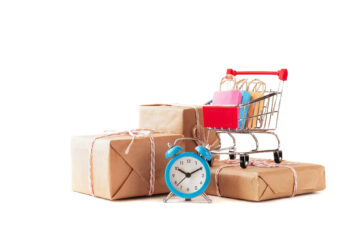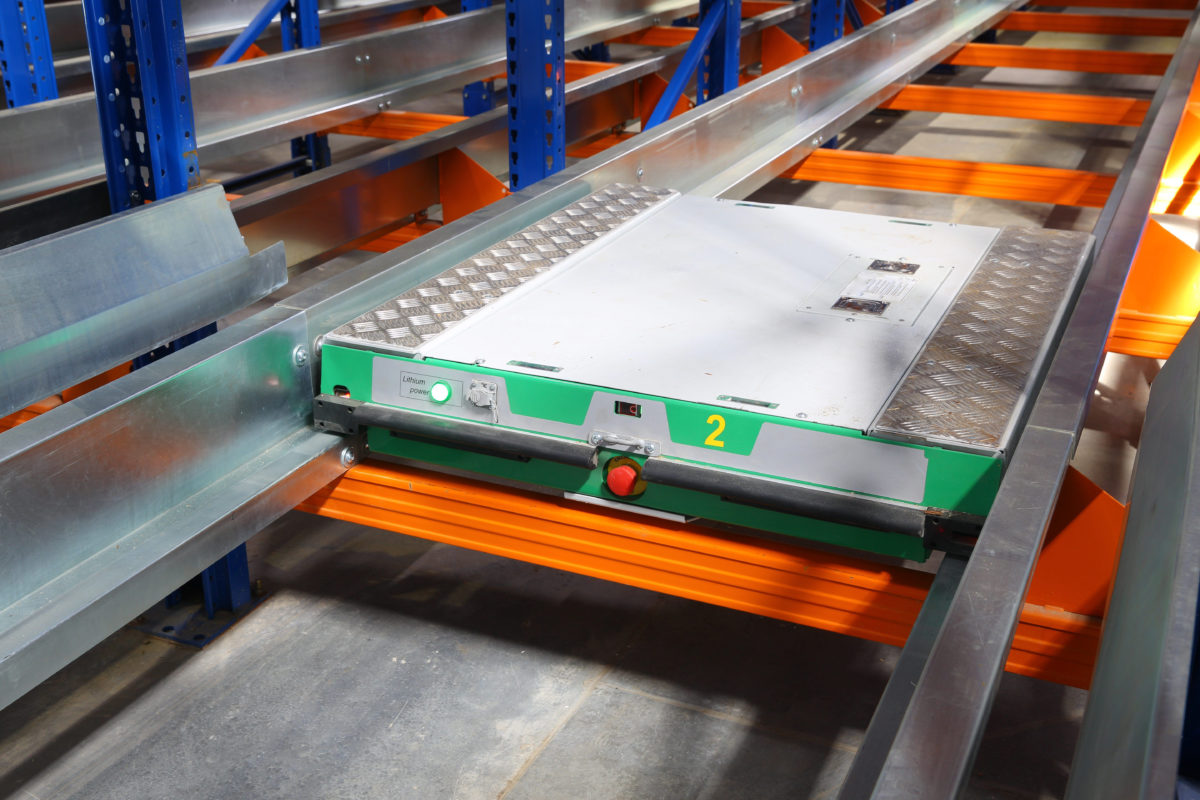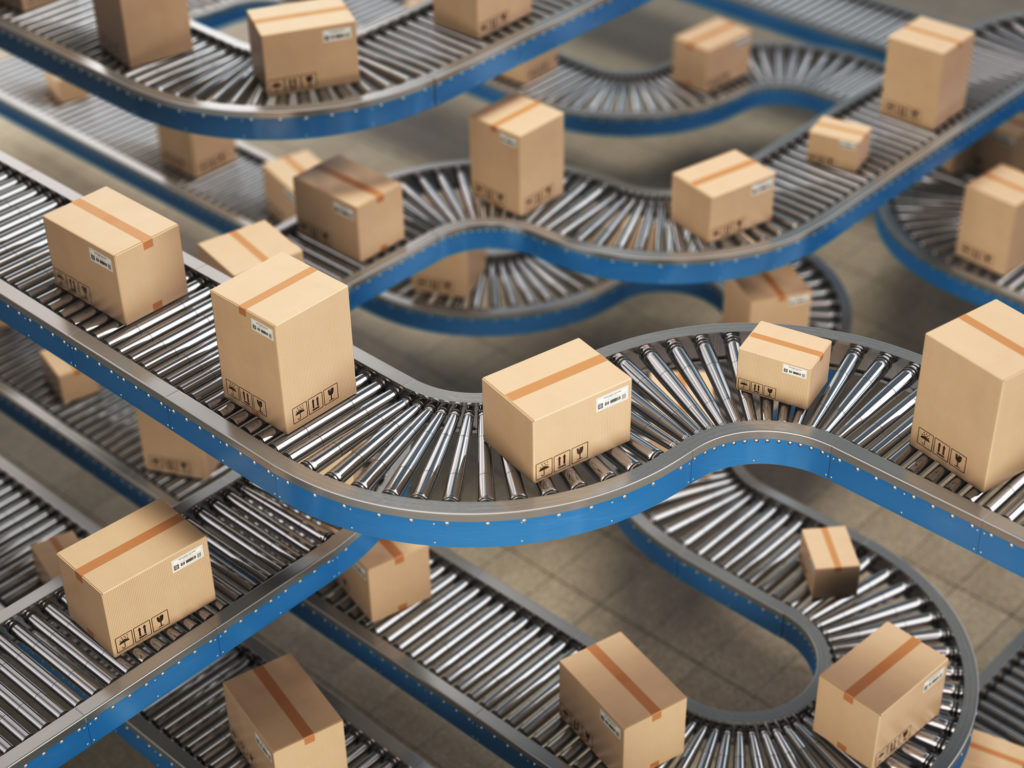 Are you managing more than 2000 packages per day?
Are you managing more than 2000 packages per day?
If you are not there yet, start here.
In Part 2, we highlight some more of the innovative solutions that can help you optimise and automate your operations as you grow. Let us get you ready for the 5000 parcels-a-day e-business that is on your horizon.
Autonomous mobile robots
Autonomous mobile robots are very scalable and are giving the more traditional fixed automation solutions a run for their money.

The robots typically bring the mobile shelving units to goods-to-person picking stations, each one of which is set up with put positions for several orders. This system suits profiles with several lines / items per order.
A common objection is that the mobile shelving units do not use the height of the building well, and hence provide a poor storage density. In practice a combination of clever storage algorithms and use of mezzanine floors (while requiring investment) can mitigate a lot of this. The decrease in storage density that is seen can be a price worth paying for the simplicity of the solution.
Meanwhile, the so-called ‘fixed’ automation technologies have not stood still and may be the right solution for very large-scale e-commerce fulfilment operation, particularly in countries with high labour costs/labour availability issues.
AutoStore
Autostore is an ultra-high-density storage and buffering system used for goods-to-person piece picking. It works well for high volumes of single products of a certain size (i.e., those that fit well into their plastic totes). The system delivers good storage density and picking productivity by storing the product totes in stacks with no aisles. Robots roam around on top of the stacks and retrieve totes to picking stations. The tote containing the residual quantity is then returned to the top of a stack. Natural ‘optimisation’ occurs with more frequently accessed products staying closer to the top of the stack.
The benefits are:
- Flexibility and scalability. The system allows to easily increase picking performance by adding more robots, increasing storage locations, or adding new workstations.
- Enhanced security. Stock losses are minimised by making products inaccessible until an order is processed.
- More efficient storage density – up to four times better than conventional systems.
- Low energy consumption
Autostore is a patented technology that is marketed by authorised partners worldwide.
Case example: Denmark’s Coop and Dematic
Coop, Denmark’s largest grocery retailer needed to consolidate its slow-moving dry-food goods from several warehouses with around 100,000 m2 to a newly constructed but much smaller 65,000 m2 facility at Odense. Dematic created a goods-to-person automated picking system capable of handling slow-moving products and assembling store orders in totes for dispatch. The upgraded system occupies only 6,500 m2 of the facility while processing 50% of the volume.
Automated shuttle systems

Many of the large automation companies offer shuttle systems that store and retrieve plastic totes in racking, typically double deep. The basic idea again is that of retrieving product totes that are needed for orders to picking stations, where a picker moves the goods from product tote to order tote. The shuttle retrieves the tote and brings it to a lift at the end of the aisle. After picking, the tote is then put away again in the racking. Depending on the exact system offered and the throughput requirements, there may be a shuttle in every aisle at every level of the racking, shuttles may roam between aisles on one level via cross-aisles or may move between levels in lifts. These systems can achieve very high throughputs (measured in order lines per hour) and are extremely reliable.
Most shuttle systems are adaptive and scalable making it possible to expand on a ‘step-by-step’ basis. Additional aisles can be added while the system is operational. Modern shuttle systems are proven to greatly increase speed, storage density, accuracy and throughput in e-commerce operations.
Sortation systems
 Pocket sortation systems are not new, but they provide innovative solutions for high-volume e-commerce operations. They are especially suited to fulfilment centres with a suitable order profile and product range (e.g., apparel, accessories, most general merchandise). The idea is based on taking a hanging garment sorter and adding a pocket, via a special adaptor so that the sorter can carry non-hanging goods. The system can sort and sequence pockets containing the exact order items required so that they will be delivered to the packing station in the desired order. This works well for multi-line orders. The pocket adaptors and hanging garments can be mixed so this is an ideal solution for apparel retailers with a mix of garments on hangers and flat / accessories.
Pocket sortation systems are not new, but they provide innovative solutions for high-volume e-commerce operations. They are especially suited to fulfilment centres with a suitable order profile and product range (e.g., apparel, accessories, most general merchandise). The idea is based on taking a hanging garment sorter and adding a pocket, via a special adaptor so that the sorter can carry non-hanging goods. The system can sort and sequence pockets containing the exact order items required so that they will be delivered to the packing station in the desired order. This works well for multi-line orders. The pocket adaptors and hanging garments can be mixed so this is an ideal solution for apparel retailers with a mix of garments on hangers and flat / accessories.
Case example 1: Decathlon and Dürkopp, a Knapp company
Decathlon, Europe’s leading sportswear equipment and apparel company, needed a solution when they were expanding further into e-commerce. They wanted a system with high throughput and compact design that could fit into their existing facility. They chose a pocket sortation system that extends across 2 halls and is distributed over 3 levels. With more than 70 different categories of sports on offer, the range of products s large. Many non-fashion items such as small rucksacks or carton packed camping articles are processed in the pocket, with a large number of individual articles being identified via RFID.
Case Example 2: Zalando Sweden and Vanderlande / Airtrax
Zalando, a leading fashion and lifestyle online retailer in Europe installed an Airtrax pocket sorter at its new logistics centre near Stockholm. The pocket sorter, thanks to its sequencing technology, can manage ever-changing product profiles. This pocket sorter system is specially designed to meet the demands of e-commerce. Zalando’s operation handles a throughput of around 8,000 items per hour while the sorter occupies just 2,100 m². Groups of orders picked from the warehouse are sorted in sequence and conveyed as single orders to the packing stations. The system contains 6,500 pockets. The pockets not in circulation are held in a storage area so they can immediately be made available again when required.
There are more automation possibilities including automatic or semi-automatic bagging systems and box-sizing/ closing machines. That is a story for another day.














